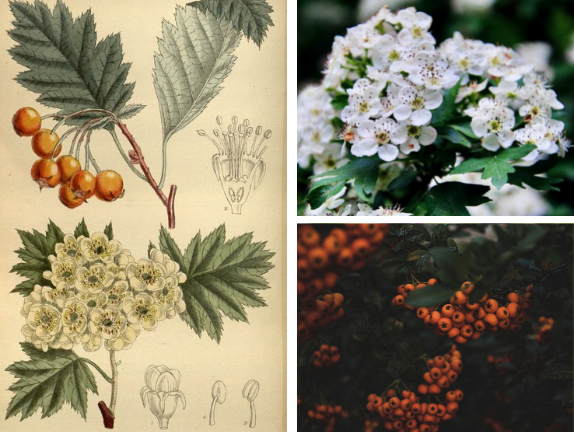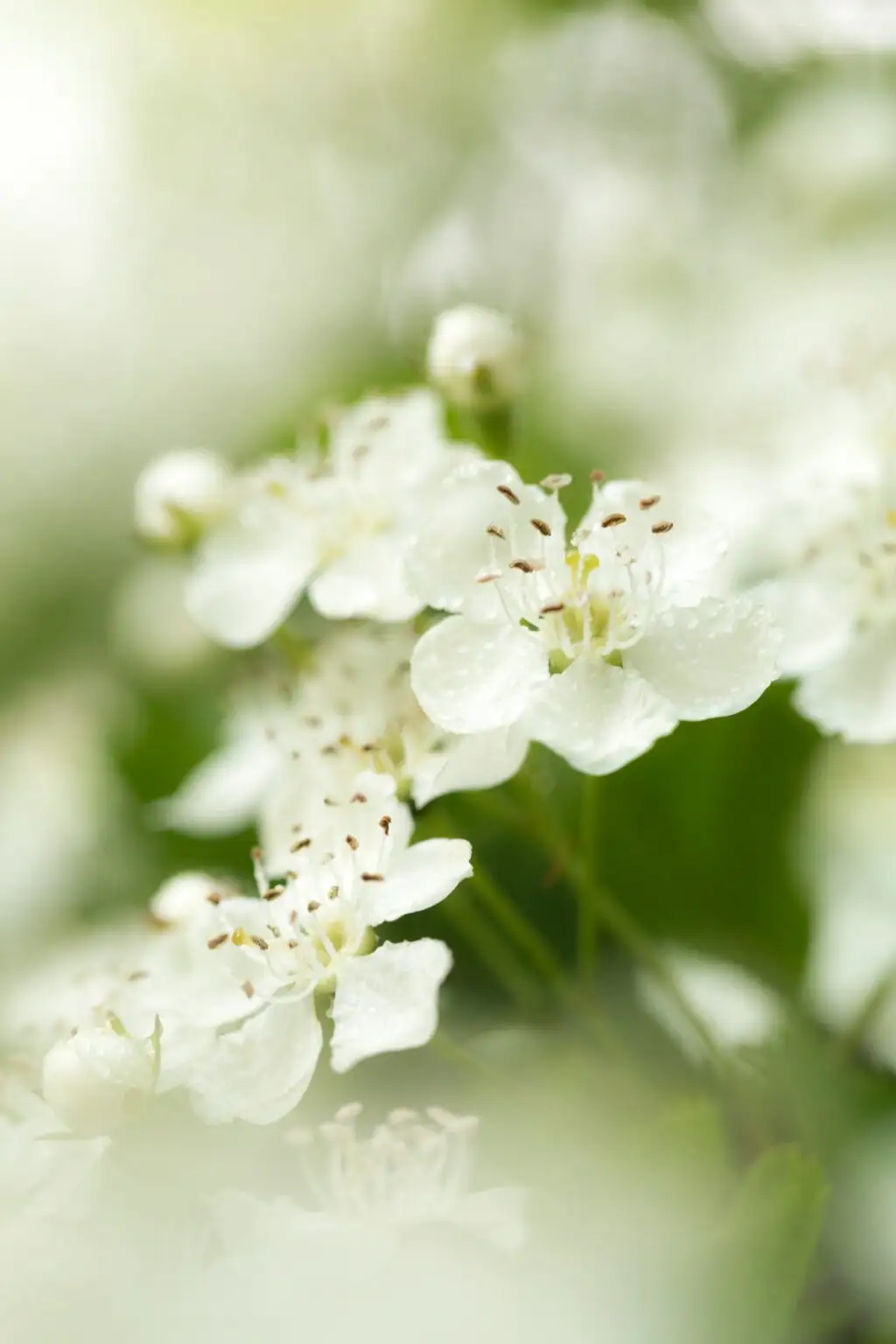Cretaegus spp.
Latin Name: Cretaegus spp.
Herb Class/Action: cardiovascular tonic, nervine, antioxidant, astringent, digestive bitter, nutritive, trophorestorative
Parts Used: flowers, leaves, berries
Flavors: berries: sweet, sour, astringent / leaves + flowers: astringent, sour
Energetics: mildly warming, but some herbalists consider it cooling due to the sour taste
Traditional Benefits: supports a healthy heart, supports cardiovascular system, supports heart-mind/shen, supports mood, promotes a healthy stress response, supports the nervous system, supports rejuvenation + vitality, supports digestive system, supports a healthy flow of qi, supports healthy circulation
A tried and true heart tonic, Hawthorn benefits the cardiovascular system physically as well as the emotional heart-body. Gentle yet strengthening, this herb helps with a Heart meridian that is not properly “storing” our Shen or “spirit,” indicated for a wandering mind, a lack of direction, and restless sleep.*
Considered a sacred and ‘magical’ tree, Hawthorn can grow and thrive in most environments. Ancient traditions dub Hawthorn as a protective plant, an herb of fertility, a wishing tree, and more. Folklore aside, Hawthorn flowers, leaves, and berries have centuries of traditional uses—often connecting the mind, body, and soul so that we may live more fully from our heart, values, and truest nature.
In Traditional Chinese Medicine (TCM), everything from the normal, healthy circulation of blood to our tissues to our ability to feel clear, confident and strong in our speech goes back to a healthy Heart meridian. The Heart also houses our “Shen,” or spirit, governing our ability to lead from our heart’s true calling and purpose – to extend beyond the Self and form loving relationships with those around us.

When it seems like one is leading only with their head, rather than their heart and values — or when one is feeling lost, disconnected, or unsettled — it’s essential to nourish and ground the Shen with calming, heart-strengthening herbs. Shen essentially means our consciousness: the way we think and thus take action towards our true heart’s calling and purpose, and our ability to be fully present and connect with ourselves and those we love. A healthy Shen can be seen in the ‘sparkle’ in our eyes. It’s the way we ‘light up’ when we’re with someone we care for or speaking about our passion, and our ability to make eye contact and connect far beyond words during a meaningful interaction.
In TCM, Hawthorn is used when the heart isn’t “storing” our Shen. Your mind might be wandering or moving quickly from one thought to another, and you might have trouble focusing. Hawthorn is used to help reel in your focus and reconnect your mind to your heart. It’s calming to the nervous system and may help ease stress and support restful sleep. It’s a gentle tonic that helps nourish and protect the heart and nervous system.
Hawthorn leaves and flowers have antioxidant properties—rich in polyphenols and flavonoids—suggesting benefits for a healthy inflammatory response and detoxification, as well as cardiovascular, digestive,
and circulatory support.
“The hawthorn bush, with seats beneath the shade. For talking age and whispering lovers made.”
– Oliver Goldsmith, the Deserted Village

